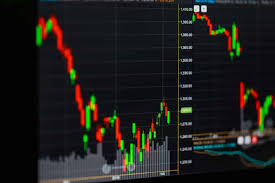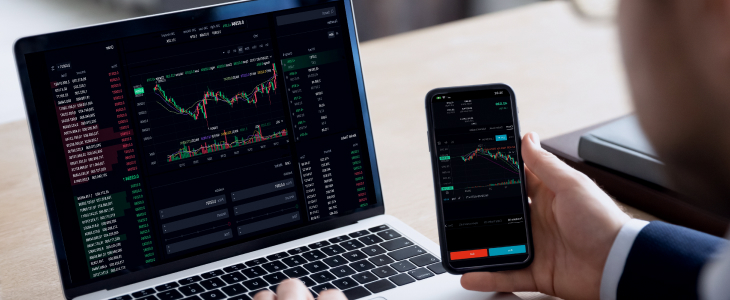Mastering Forex Trading Comprehensive Training Guide

Mastering Forex Trading: Comprehensive Training Guide
Forex trading is an exciting and dynamic field that offers numerous opportunities for profit. However, it’s also a realm filled with risks and challenges that demand a solid understanding and strategy. This guide aims to equip aspiring traders with the knowledge necessary to navigate the forex market. Whether you are a complete novice or someone looking to refine your skills, this article provides insights into forex trading training, strategies, and resources. One valuable resource for finding reliable brokers is forex trading training Brokers Argentina, which provides information on various trading platforms.
Understanding Forex Trading
Forex, or foreign exchange, is the largest financial market globally, where currencies are bought and sold. Unlike stock markets, the forex market operates 24/5, allowing traders to engage in transactions at any hour. The primary goal of forex trading is to exchange one currency for another, anticipating price fluctuations. To succeed, traders need to grasp how different factors—economic indicators, geopolitical events, and market sentiment—affect currency movements.
The Importance of Forex Trading Training
Many new traders enter the forex market with little to no training, relying solely on their instincts or opinions. This approach often leads to substantial losses. Effective training is crucial for several reasons:
- Risk Management: Understanding risk management strategies is essential to protect your trading capital. Traders learn how to set stop-loss orders, position sizing, and leverage management to minimize losses.
- Technical and Fundamental Analysis: Training helps traders learn to analyze market trends and make informed decisions based on data rather than emotions. Technical analysis focuses on price charts and indicators, while fundamental analysis examines economic news and reports.
- Developing a Trading Plan: A sound trading plan guides traders in making consistent and disciplined decisions. Training provides frameworks for developing personalized trading plans based on individual risk tolerance and goals.
- Psychological Preparedness: Forex trading can be emotionally taxing, often leading to irrational decisions. Training helps traders develop the psychological resilience necessary to handle losses and market fluctuations.
Key Components of Forex Trading Training

A comprehensive forex trading training program should cover several key components:
1. Market Analysis Techniques
Your training should equip you with tools for both technical and fundamental analysis. Learn how to read price charts, identify patterns, and use indicators for better entry and exit points. Fundamental analysis will help you understand how economic data releases influence currency movements.
2. Trading Strategies
Successful traders often utilize specific strategies. Some popular strategies include day trading, swing trading, and scalping. Each strategy requires different techniques and risk management approaches, so understanding them all can give you a competitive edge.
3. Risk and Money Management
Your capital is your lifeblood. Learning how to allocate funds, set stop-loss orders properly, and diversify your trades is essential for long-term survival in forex trading.
4. Simulation and Practice
Many training programs offer demo accounts where you can practice trading without financial risk. Use these accounts to hone your skills, test strategies, and develop a feel for market conditions.

5. Continuous Learning
The forex market is constantly evolving. Good training programs emphasize the importance of staying updated with market trends, economic news, and changes in trading technology.
Choosing the Right Training Program
With numerous options available, selecting a forex training program can be overwhelming. Here are some tips to help you make the right decision:
- Reputation: Look for programs with positive reviews and testimonials. Research the instructors’ backgrounds to ensure they have proven trading success.
- Course Structure: Ensure the program covers all essential aspects of trading and includes both theoretical knowledge and practical application.
- Support and Resources: Choose programs that offer ongoing support, like mentorship or community access, to help answer questions as you progress.
- Cost: While many high-quality resources may come at a price, be wary of overly expensive programs that don’t deliver value. Consider finding free resources to supplement your learning.
Common Mistakes to Avoid
Even with training, traders can fall into common traps. Here are mistakes to watch for:
- Overleveraging: While leverage can amplify profits, it also increases risk significantly. Don’t use more leverage than you can handle.
- Failure to Develop a Plan: Trading without a structured plan leads to reckless decisions. Consistently following a plan helps maintain discipline.
- Neglecting Analysis: Some traders make choices based solely on gut feelings. Successful trading relies on solid analysis and not just instincts.
Conclusion
Forex trading offers vast opportunities for those willing to invest the time in training and education. By understanding market dynamics, developing a robust trading strategy, and managing risk effectively, you can position yourself for success in this competitive landscape. Whether you are just starting or looking to refine your skills, the journey of learning about forex trading is ongoing, and the resources available today make it more accessible than ever. With the right training and commitment, you can achieve your trading goals and navigate the complexities of the forex market successfully.
